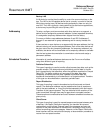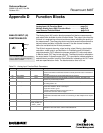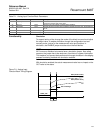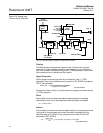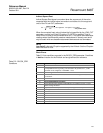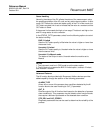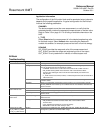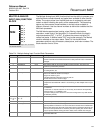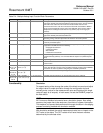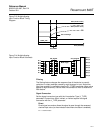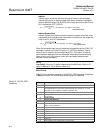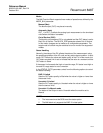
Reference Manual
00809-0100-4697, Rev EA
October 2011
Rosemount 848T
D-6
Modes
The AI Function Block supports three modes of operation as defined by the
MODE_BLK parameter:
Manual (Man)
The value of the block output (OUT) may be set manually
Automatic (Auto)
OUT reflects the analog input measurement or the simulated value when
simulation is enabled.
Out of Service (OOS)
The block is not processed. FIELD_VAL and PV are not updated and the
OUT status is set to Bad: Out of Service. The BLOCK_ERR parameter
shows Out of Service. In this mode, changes can be made to all
configurable parameters.
Alarm Detection
A block alarm will be generated whenever the BLOCK_ERR has an error bit
set. The types of block error for the AI block are defined above.
Process Alarm detection is based on the OUT value. Configure the alarm
limits of the following standard alarms:
• High (HI_LIM)
• High high (HI_HI_LIM)
• Low (LO_LIM)
• Low low (LO_LO_LIM)
To avoid alarm chatter when the variable is oscillating around the alarm limit,
an alarm hysteresis in percent of the PV span can be set using the
ALARM_HYS parameter. The priority of each alarm is set in the following
parameters:
•HI_PRI
•HI_HI_PRI
•LO_PRI
•LO_LO_PRI
Table D-3. Alarm Priority Levels
Number Description
0 The priority of an alarm condition changes to 0 after the condition that caused the
alarm is corrected.
1 An alarm condition with a priority of 1 is recognized by the system, but is not
reported to the operator.
2 An alarm condition with a priority of 2 is reported to the operator, but does not
require operator attention (such as diagnostics and system alerts).
3-7 Alarm conditions of priority 3 to 7 are advisory alarms of increasing priority.
8-15 Alarm conditions of priority 8 to 15 are critical alarms of increasing priority.



